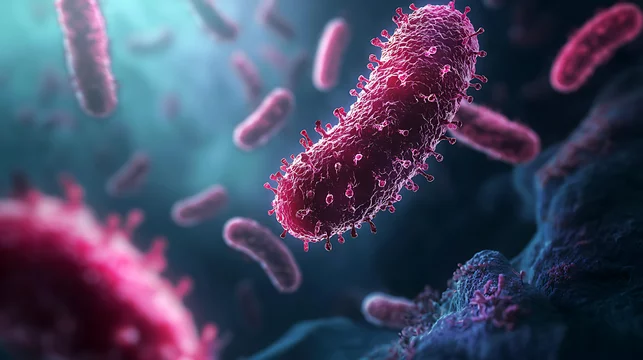Syllabus
GS 3: Science and Technology
Context: Recently, CSIR-Centre for Cellular and Molecular Biology (CCMB), Hyderabad has found that many bacteria make mistakes while building their cell wall.
More on the News
- Bacteria sometimes instead of using the correct amino acid L-alanine, theyuse a structurally similar one called glycine.
- This small change weakens their cell wall making them more sensitive to antibiotics.
- These findings have been published in the Proceedings of National Academy of Sciences (PNAS) journal.
Key Findings from the Study
- Scientists discovered that bacteria use a special enzyme called PgeF (Peptidoglycan Editing Factor) to keep their cell wall properly built.
- They found this by studying bacterial genes and using advanced tools to analyze molecules.
- A similar enzyme is also found in humans, called LACC1.
- This enzyme is linked to several autoinflammatory diseases, where the immune system becomes overactive.
- The study of cell wall will help scientists in developing of new drug strategies to combat bacteria.
About Bacterial Cell Wall

- The bacterial cell wall is made of sugars and short chains of amino acids call peptidoglycan.
- This consists of many sugar polymers interconnected by short peptides.
- The peptidoglycan layer surrounds the bacterial cytoplasmic membrane much like a jute bag.
- The peptides within this structure are cross-linked in various ways, especially through specific bonds between amino acid residues on neighbouring peptide chains.
- One such rare component, found only in bacterial cell walls, is meso-diaminopimelic acid (mDAP).
- It is absent in other life forms, including humans, which is why many antibiotics target it.
- Peptidoglycan is composed of many identical subunits.
- Each subunit within the sacculus contains two sugar derivatives, N-acetylglucosamine (NAG), N-acetylmuramic acid (NAM) and several different amino acids.
- It provides shape, strength and protection. It plays vital role in survival and is also major target for antibiotics.
About CCMB
- The Centre for Cellular and Molecular Biology established in 1977 under Council of Scientific and Industrial Research (CSIR), situated in Hyderabad, Telangana.
- The idea to set up a centre for advanced research in cellular and molecular biology was proposed by Dr. Pushpa Mittra Bhargava, a well-known Indian scientist and the first director of CCMB.
- UNESCO’s Global Molecular and Cell Biology Network has recognized it as a “Centre of Excellence.”

